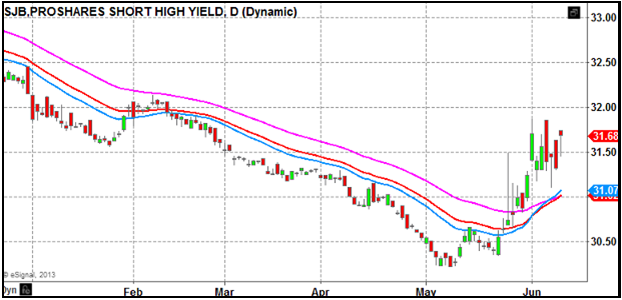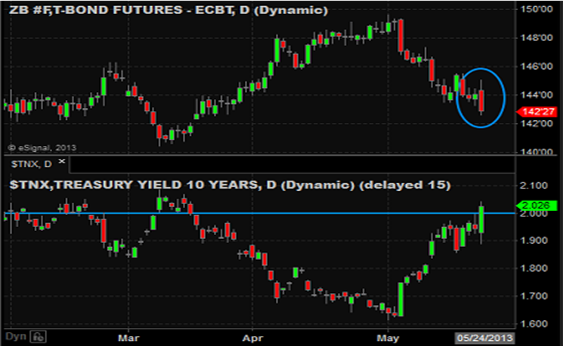Economics
Last Week
Last week was obviously all about the Fed, as Chairman Ben Bernanke’s testimony and the Federal Open Market Committee minutes were taken as “hawkish” by the market, which led to the Wednesday reversal and the first down week for stocks in five.
While pundits will debate the minutiae, the real takeaway from the Fed last week was that, on the margin, it seems more apt to taper QE rather than extend it. We can also conclude that, generally, Fed presidents are becoming a bit uncomfortable with the current program.
But, and this is the key, while the Fed is cautiously optimistic about the economy, its members want to see the improvement have some staying power, as they have been “faked out” by this economy a few times over the past several years. As a result, they will err on the side of leaving the current QE program in place longer than they would like.
There are two takeaways then: First, based on what we saw last week, we should expect “tapering” of QE to begin sometime in the September-to-December time frame, if the data continue to show improvement in the economy. The Fed meeting on Sept. 18 is the date we should all circle as the first meeting where QE could potentially be tapered.
Second, the Fed is extremely data-dependent—as the data goes, so too will their decisions on when (and if) to actually taper the QE program. So, economic data, especially jobs and inflation, are more important than usual this summer.
This Week
Domestically it’s a pretty quiet week, with the highlights being the jobless claims on Thursday and the monthly Personal Income and Outlays report Friday.
Jobless claims dropped last week and reversed about half of the surge we saw two weeks ago. Despite the volatility, the four-week moving average is still at a pretty low level (340k). But, it’ll be important for markets to see the downtrend in claims resume, as the labor market is obviously important to the Fed.
Personal income and outlays is important not because of the spending numbers in the report, but more so because of the Personal Consumption Expenditure (PCE) price index, which is the Fed’s preferred measure of inflation. Inflation is running low, and that has some at the Fed nervous about removing accommodation.
St. Louis Fed President James Bullard has been especially vocal about wanting to see inflation rise before “tapering” QE. So, the PCE price index is important because, if it remains low, that may push back the date “tapering” begins.
Internationally it’s the same thing—the most-important factors in the short term are whether the European Central Bank will become more-accommodative and whether the Bank of Japan will continue its massive accommodation, add to it or even reduce it if Japanese bond yields continue to rise at the current pace.
So, while it’s a quiet week generally, the European Union’s HICP numbers Thursday (HICP is their measure of inflation) are key because inflation there is too low. Lower inflation implies a higher likelihood that we’ll see the ECB become more-accommodative over the coming months.
In Japan there is a lot of data this week (it’s by far the busiest region) with retail sales, Consumer Price Index, household spending and industrial production all hitting the tape. This data will show whether “Abe-nomics” is having the desired effect. Given the volatility we saw in Japan last week (in both the equity and bond markets) this data now takes on even more significance.
Don’t ignore Japan—last week it was a major influence on markets, and has the potential for a repeat performance this week.
Remember, this is all about central banks—and Japan currently is the one throwing its weight around the most. If that appears to be changing or it looks like there’s instability in the Japanese markets, this will weigh on U.S. and European shares.




